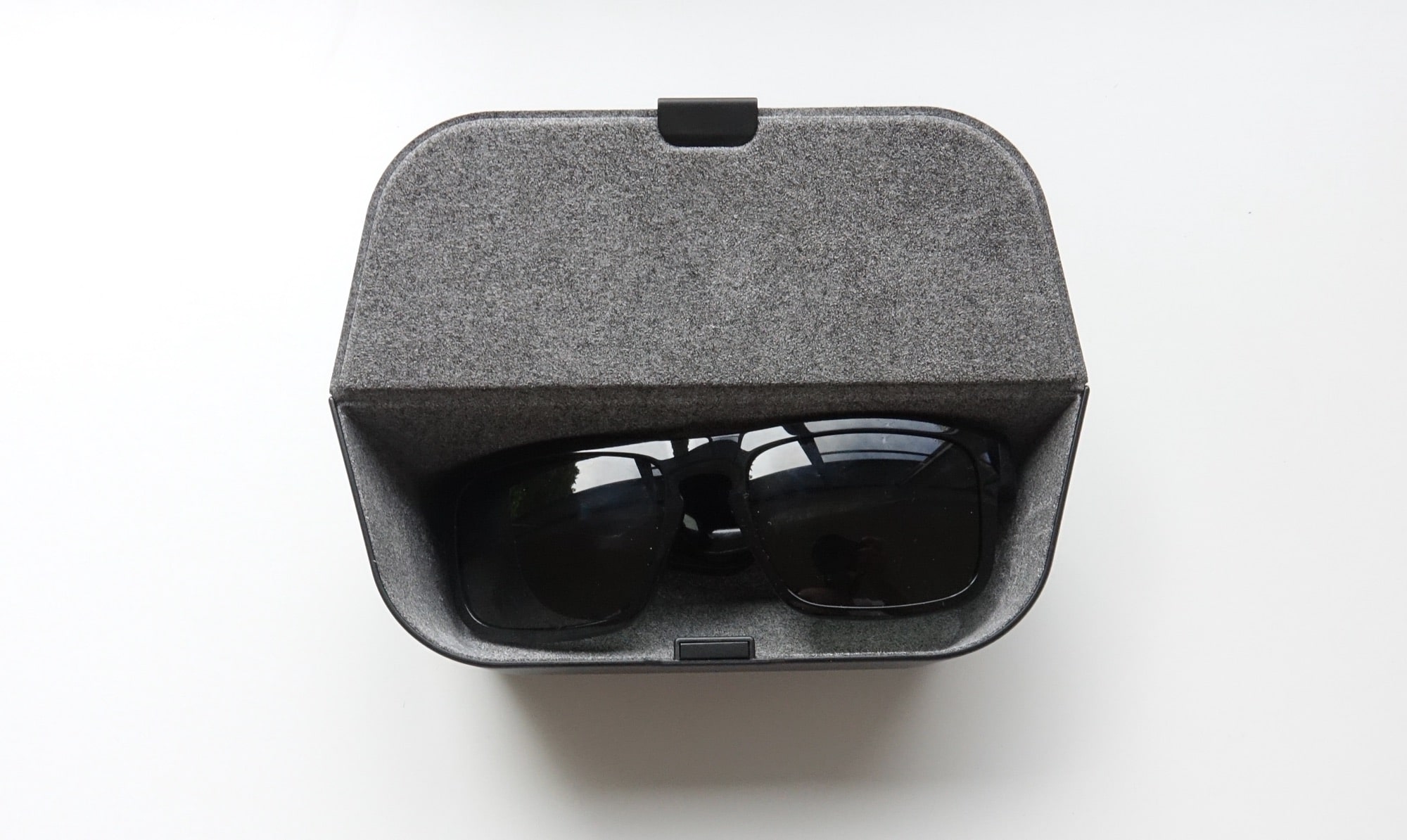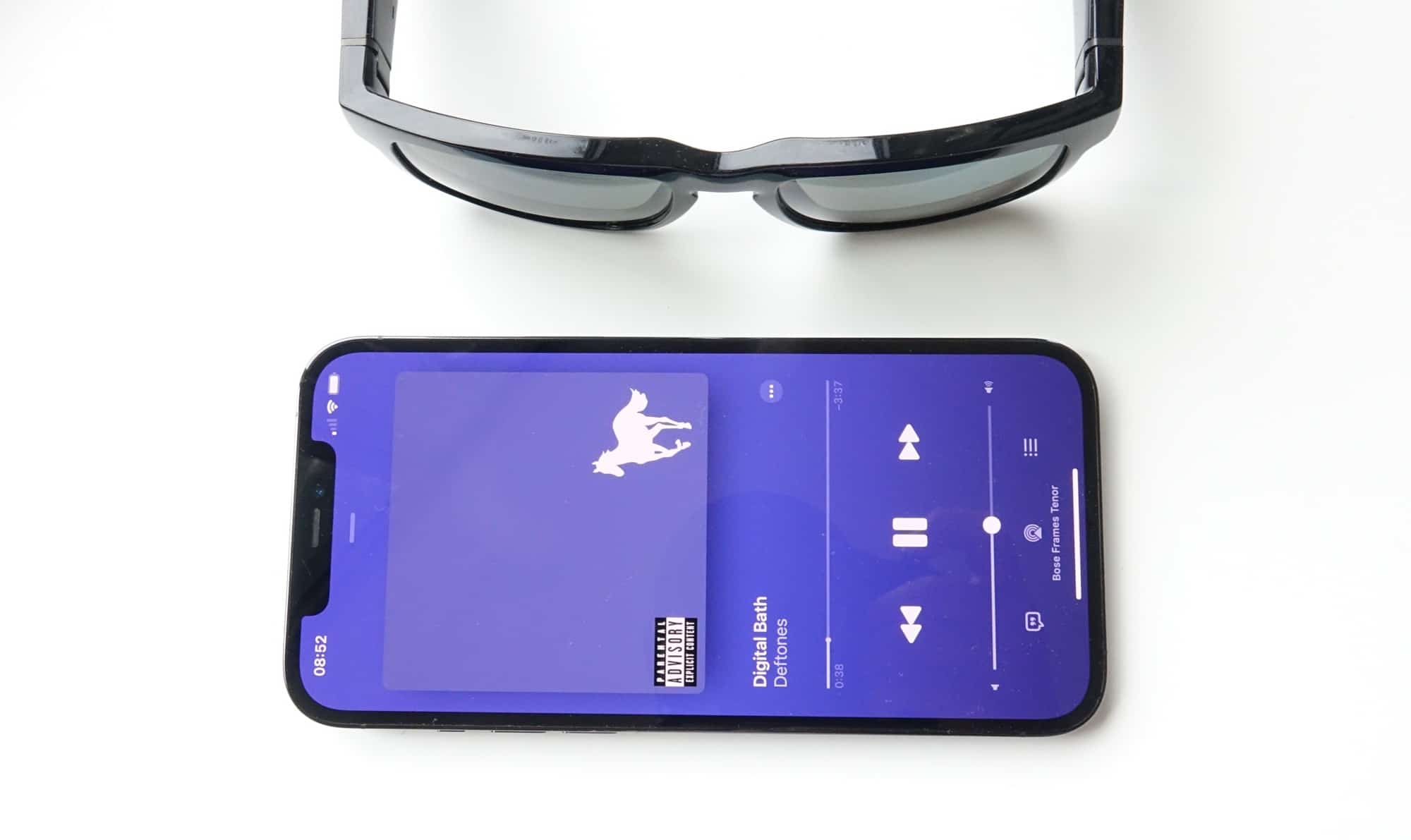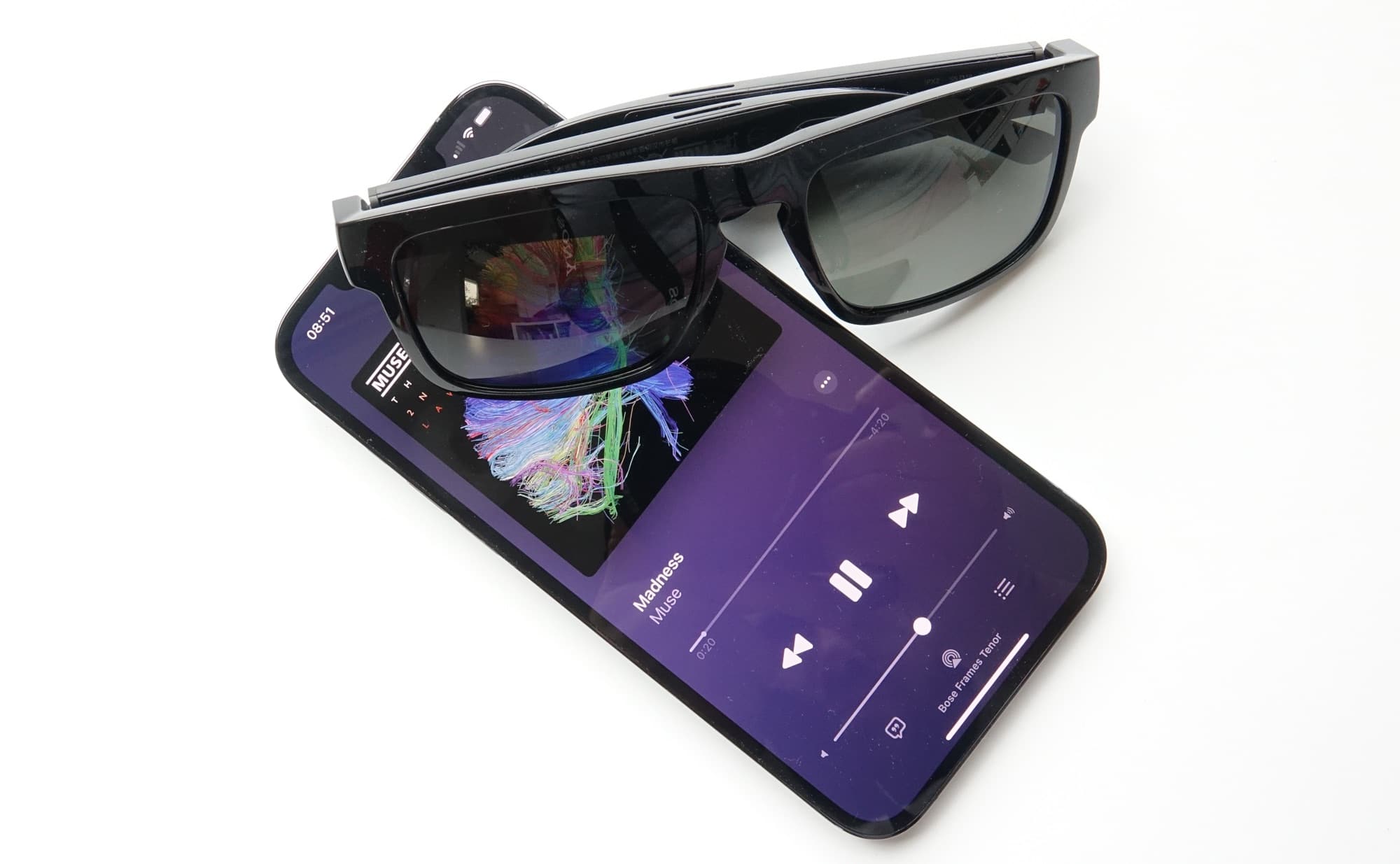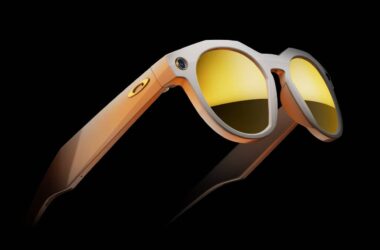Quick review
The good
The not-so-good
Aren’t a fan of walking around with a pair of earphones? The Bose Frames Tenor make it possible to walk and talk without one, and still get decent sound all the same.
Even though you can find plenty of wireless and cordless earphones in superbly small sizes, there’s still a chance that won’t suit you. As tiny and clear as these things are getting, the reality is not everyone will want to walk around wearing a pair. And that’s fine.
Earphones are a choice, just as any pair of headphones are, and so you get to say which pair of portable sound gadget you’re going to wear, which hearable you’re going to don. You have plenty of choices, if any at all.
But if you don’t want to wear something in your ears or even on your ears, and yet you still want a soundtrack, well then you don’t have as many choices to pick from. Typically, you’re talking about a speaker, something that is less common when you’re walking and talking, because it’s more of a common courtesy to not blare your sound out and bother the rest of the world.
And yet there might actually be a solution to this. You’ll just have to be comfortable with wearing a specific style of sunglasses.
That’s essentially what the Bose Frames Tenor are, and they might just offer one of the nicest open-audio experiences to date, despite a price almost guaranteed to throw you off.
Design and features
Stop me if you’ve heard this one before: Bose has made a pair of sunglasses with a pair of headphones inside.
If that sounds like something you’ve heard before, it’s because the idea isn’t new, though Bose is refining it in the Bose Frames Tenor and Soprano. Both are a sequel of sorts, the follow-up to the Bose Frames Alto, the marginally more masculine edition of the series, with the original offering the squarish Alto and the circular Rondo, and this year shifting it to the squarish Bose Frames Tenor and the more circular Bose Frames Soprano.
Both Tenor and Soprano are new shapes on roughly the same technology, and we’re reviewing the Tenor in this piece, so it’s basically a follow-up to the Alto, which we liked a whole lot more than we expected. They were rather a surprise, and delightfully so: we called them Pickr’s Best Surprise of 2019.
A sequel is a bit less surprising, but it’s one where we always hope to see improvements, and that starts with design, with the new models shrinking back some of the plastic and excess length, even if that large chamber for a speaker that sits on your ears is still clearly a part of the design.

The Bose Frames Tenor still aren’t technically headphones the way you’ve probably come to think of what a pair of headphones are. Rather, they’re technically a form of speaker, with a small directional speaker resting on your ears, and playing sound to your ears personally. It’s less of an earphone and more of a personal speaker, but that’s ok, because it’s a design more meant for you than others.
Design-wise, the Bose Tenor are basically a pair of sunglasses with a thick and meaty pair of arms. Like real glasses, however, they even support prescription lenses, a real change from the first generation that voided the warranty if you wanted to do that.
In this generation, there is a design change of sorts: the plastic is glossy, compared to the marginally more less shiny plastic used in the prior model. It’s not a change that will sit well with everyone, and we’re a little surprised by the move. They’re almost too glossy, too shiny.
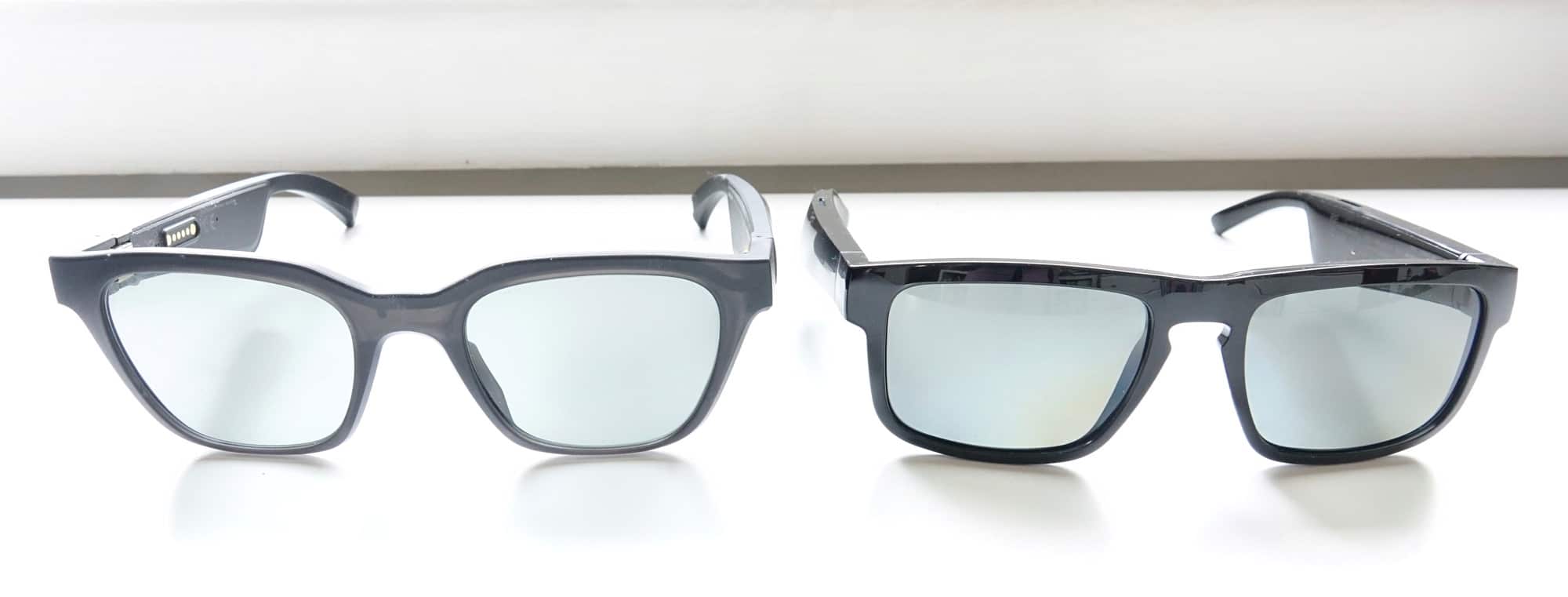
In-use
Bose has made other changes, though, and now includes two ways to control the sunglass speaker, with a single-button on one side for pause and play that’s a touch more refined in this new pair, while volume can be triggered with a touchpad on the right arm, seemingly pulled from the Bose QC Earbuds and Bose 700 Headphones, but basically found on the arms of the sunglasses now.
The main button is still your pause and play control, and it feels a touch more responsive , plus it’s the way you’re going to answer calls and talk to people through your glasses. Seriously, walking around and listening to music is great, but walking around and talking to people without appearing as though you have a pair of earphones on is one of the better things about the earphones, which also aren’t really earphones.
Rather, they’re technically a pair of speakers made for your ears and your ears alone. Mostly, anyway.
Performance
Speakers tend to respond a little differently from earphones, and our time with the Bose Alto proved that last time, so during our Bose Tenor review, we were kind of already prepared.
These are speakers focused on your ears, and won’t sit in your ears like a pair of earphones, so the concept is very different from wearing a pair of earphones altogether.
However we’re still going to review them the way we’d review any sound gadget, which means running them with the Pickr Sound Test, which you can listen to for yourself, and starts with electronic to get the mood and sound recreation right.
And that starts with the likes of Tycho, whose piece “Glider” starts off with a bass drop that kind of sets the mood, something specifically there to see if it can move the needle for headphones and speakers and pick up on what is an unusually large hit in the bottom end. Unfortunately, it’s missed almost entirely by the Bose Frames Tenor, despite delivering decent mids and highs throughout, and setting up the review what we can largely anticipate: decent sound minus much of the bass.
It’s a feeling that largely stays true, with the punchy bass hit from the pop stylings of Carly Rae Jepsen reduced to a sound that lacks the punch and reduces the bass to a somewhat meaningless sound pitched against an otherwise decent recreation and rendition, almost like the bass was there, but also not. You know what you should be hearing, but you’re only hearing a sampling of it and without the punch the bottom end almost entirely delivers.
That’s not entirely removed from what we experienced in the first generation of the Bose Frames, though the sound does feel improved overall.
Ariana Grande’s “Into You” doesn’t deliver any of the obvious bottom end punch you’d yearn for in the song, but none of Grande’s clicks or vocal persuasion is lost in the delivery at all. It’s the same with Charlie Puth’s “Done For Me”, which normally has more punch than you’d like to expect, but yet comes off without a single knockout here. You can feel some of the bass reverberate against your skull if it’s heavy enough in the track, but it still falls flat here, even while the highs and mids deliver a balance that seems clearer than a pair of sunglasses ought to.
Essentially, you get the music you want, but without the impact. The bass is created, but only a part of the sound, and not the type that normally delivers a goal. It’s a weird sensation, almost as if the earphones were bass-less, but trying to make up for it.
It means some music can feel a little strange. The guttural bass of FKA Twigs’ “Two Weeks” has you focus on the synth and vocals with pretty much no feeling in the bottom end, a direct opposite to what it’s like with practically any other pair of earphones, but you still get an otherwise decent rendition of the song. It almost becomes a psychosomatic recreation of music, because you know what should go in the bass, so you may recreate the feeling with your own mind, filling in the gaps and dealing with, if you can be so bothered.
However it also means the bottom end can feel strange. The drums and bass guitar in Rage Against The Machine can feel empty, but the song is still enjoyable to listen to, the bass merely feeling subdued as opposed to removed entirely.
Jumping to our secondary sound test made for bass, the Pickr Bass Test, confirms this with some of the heavier bass, exhibited in Billie Eilish’s music, which delivers a heavy punch without any of the, well, punch. You can hear what the bass should be doing, but it offers no feeling the way you might expect typical portable audio wearables to deliver.
If the music you’re listening to is a little less bass heavy, the experience might be a touch more normal, though. Classical and jazz are two areas that didn’t feel dramatically out of kilter, though the bottom end was clearly not as defined as we’re used to throughout.
One thing of note is that while most earphones deliver more across the range and can focus on the bottom end, most earphones are not an open-audio style of listening. The Bose Frames are, and specifically so.
Don the Bose Frames and you’ll be able to listen to whatever and the outside world simultaneously, making these a solution for portable audio built to let you hear both your soundtrack and everything else, handy not just for walking and talking, but riding a cycle, as well.
Battery
While the audio side has seen some slight improvements, there’s a change on the battery side with an almost doubling of battery life.
Back in the Bose Alto Frames, you could expect maybe three hours, which wasn’t great for a day, and basically suggested you’d need to carry around the proprietary charger if you wanted to use it throughout that day.
In the Tenor Frames, Bose has kept the proprietary magnetic pin charger (sigh), but has increases the life to a little under six, with an official 5.5 hours, and five easily being reached in our tests. It’s a decent result, and one that means you can sit on a train chilling to your tunes in the morning commute, take it out at lunch to get something to eat, and ride them back, all the while shielding your eyes from the public. Stick them on the charge and repeat tomorrow.
It’s even a battery that holds it own if you don’t use them for several days. Through our testing, we found you could go without charging the Bose Tenor Frames for over a week, and they’d hold their battery life with no problems, basically meaning that even if you don’t use them daily — if you’re using them sparingly, because maybe the sun isn’t as harsh one week and you don’t need them — they’d hold their charge. That’s a solid result from a pair of wireless earphones, especially once with a small battery.
Value
However, while that small battery has improved, the value can still be hard to justify, though at least the improvements balance things out just a little better overall.
At $399.95, the Bose Frames Tenor are expensive headphones and personal speakers, and rather pricey sunglasses, especially for a brand not exactly built on a reputation of the latter. They offer better sound than you might expect, minus the heavy bass you might also desire, and are an excellent option for walking around, and listening to everything while still being able to listen to the world. But at $400, they’re also a pair competing with the likes of noise cancelling earphones, which these don’t offer, and can make it seem as though they’re expensive earphones all the same.
Much like how the Bose SleepBuds II were a somewhat expensive approach to earphones for a problem that could be solved with a cheaper concept — earplugs or any speaker playing white noise — the Bose Frames are also a somewhat expensive concept pitched at solving a problem that doesn’t really exist: do you really need earphones that don’t look like earphones when you walk around?
That’s the question being solved here, and while they’re a delightful pair with a really cool use, answering that question with a value argument seems harder, because $400 is a lot of money to spend on a pair of sunglasses that don’t come with any particularly specialty in glass or optics, and mostly exist because of the sound.
What needs work?
The sound is an improvement on the first model — for sure — and the lenses can now be replaced without voiding the warranty — also true — but $400 can still feel expensive for what you’re getting, possibly because the refinements in this generation also introduce some other issues.
Take the style, because you now need to put up with glossy plastic, which doesn’t feel quite as cool as the matte plastic we saw before. We liked that more in the first gen — it’s a personal aesthetic choice, for sure — with the Tenor being glossy plastic only.
The other major issue in the Bose Tenor is still the bass, which has improved a little, but still isn’t the best. You’ll get much better bass from a pair of earphones — practically any pair of earphones — though it has improved. Music with enhanced bass definitely exhibit it, but most won’t. Talk it up to the largely “missing in action” problem of the Frames speakers, because it’s just hard to get that bass to your ears with speakers alone.
A different problem might have come from the minor improvements Bose has made to the personal approach to speakers the Bose Frames uses, and that’s sound leakage.
Whereas the first pair of Bose Frames kind of blew our minds for playing sound personally to our ears in our own little space, something Bose has also experimented with in a pair of neck-cuddling speakers, the Bose Frames Tenor can leak a little more sound than you might expect. It’s still a sense of sound made mostly for your ears, but the sound leakage is there, and if you turn up the volume, you can expect someone nearby to hear your sound a little more than you might expect.
Final thoughts (TLDR)
While the sound leaks out a little, that’s not enough to dissuade us from enjoying our time with the Bose Frames Tenor, which are a thoroughly different type of earphones for the regular day-to-day.
Like the original, the Bose Frames Tenor are your personal soundtrack, and that’s something we’re love.
It’s hard to place a value on the balance of that goal, because while the aesthetics and lack of bass aren’t going to be everyone’s cup of tea, the Frames make up for it with otherwise decent sound that doesn’t impede on your sense of style too much. They’re not earphones that ask you to be comfortable with big black dots in your ears or white stalks protruding from them. Rather, the Bose Frames are more unassuming, and still allow you to hear and experience the outside world while you enjoy the music and podcasts from within.
In short, even though they’re imperfect, the Bose Frames Tenor are a delightfully solid take on open audio you might just adore, provided you can get over the price.
Frankly, we think version three is where Bose will nail this. This model — by all accounts the Frames version 2.0 — is an improvement, but if Bose improves the speaker, irons out the aesthetics, and maybe teams up with a brand known for optics and sunnies, we suspect version three of the musically-themed sunglasses will knock it out of the park.
For now, the Bose Frames Tenor are well worth checking out, especially if you’re not in love with the style of any earphones to date.









